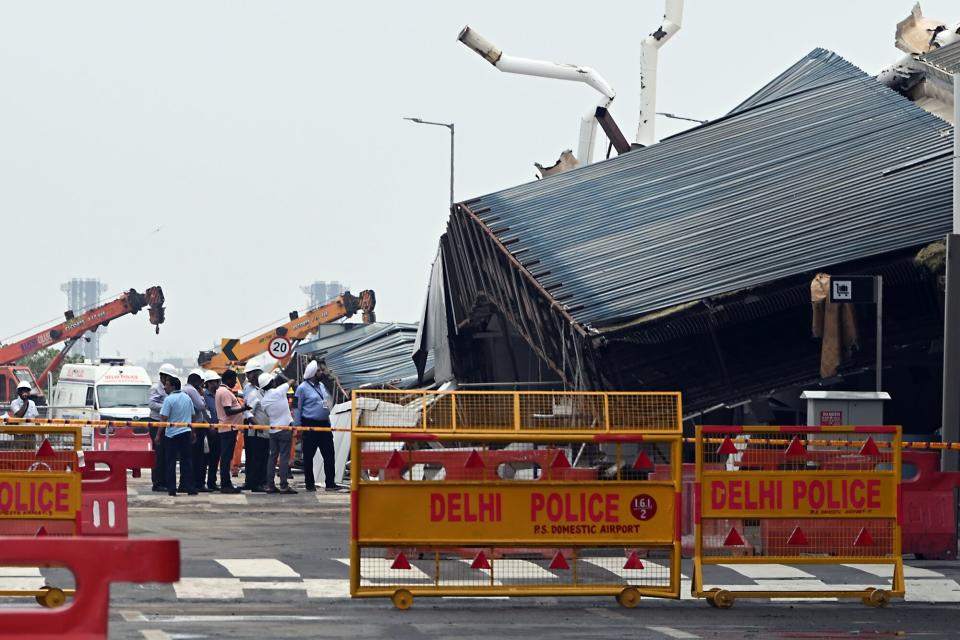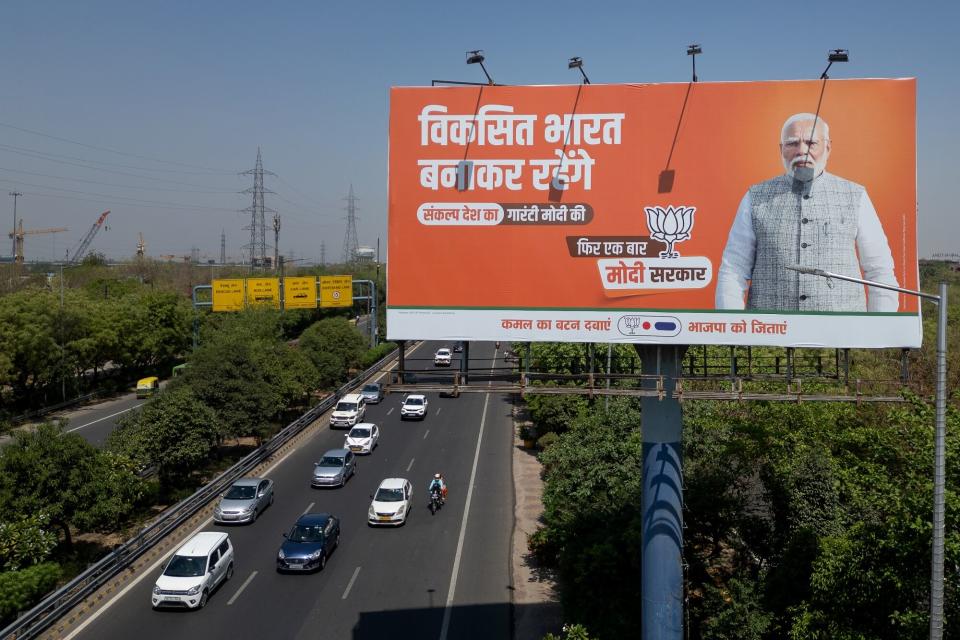Airport Roof Collapse Fuels Worries Over Modi Building Spree
(Bloomberg) -- The deadly roof collapse at India’s busiest airport is the latest in a string of infrastructure failures, raising safety questions as Prime Minister Narendra Modi prepares to spend billions of dollars to improve transportation.
Most Read from Bloomberg
Justice Department to Charge Boeing, Seeks Guilty Plea from Planemaker
French Markets Gain as Election Spurs Fragile Reprieve From Rout
BlackRock Buys Preqin for $3.2 Billion in Private Data Expansion
Trump as President or Private Citizen: Why Supreme Court’s Immunity Ruling Is a Test
Officials at Delhi’s airport canceled operations at Terminal 1 after an outdoor metal canopy collapsed following torrential rainfall on Friday. Multiple cars were crushed outside the recently-renovated airport, killing one person and injuring eight, according to authorities. The area recorded its heaviest one-day June rainfall in 88 years.
Several hundred kilometers to the east, in the state of Bihar, four bridges recently collapsed and a structure at an airport in central India caved in. On Saturday, a canopy at the passenger pickup area at Rajkot airport in Modi’s home state of Gujarat collapsed, the Press Trust of India reported.
With the start of the monsoon season, water-logging is now the norm in many cities. In Ayodhya, the roof of a massive temple inaugurated by Modi earlier this year has been leaking, and flooding has inundated newly built roads, according to local reports.
The issues cast a harsh spotlight on Modi’s building spree, which officials are leaning on to boost development in the world’s fastest-growing major economy. According to Bloomberg Economics, 44.4 trillion rupees ($532 billion) in new infrastructure will become operational over the next two years. That figure equals the value of all projects built in the last 11 years.
Modi has presided over ribbon-cutting ceremonies at many of them. Modernizing infrastructure was a key part of his pitch to voters during this year’s national election, when he won a third term as prime minister. Over the past decade, his government says it’s built 80 new airports, upgraded railways and expanded highways by thousands of kilometers.
Niranjan Sahoo, a senior fellow at the Observer Research Foundation in New Delhi, says Friday’s incident at Terminal 1 raises fresh questions about the quality of India’s infrastructure. “It puts the country, which aspires to be a global power, in a very poor light,” he said, calling many of the projects an “electoral gimmick.”
Economists and business leaders have justified a big budget for infrastructure, arguing that it’s necessary to turbo-charge India’s growth and build out the nation’s manufacturing sector. As China’s economy slows, many international companies are looking to the South Asian nation as an alternative for their factories. Bloomberg Economics expects the infrastructure drive to help lift economic growth to 9% by 2030, up from 8.2% in the last fiscal year.
India’s opposition leaders have criticized some of the projects, calling them wasteful and rife with corruption. They’ve accused Modi of diverting resources and attention from reducing poverty or unemployment. The country’s infrastructure is “falling like a deck of cards,” Mallikarjun Kharge, president of the opposition Indian National Congress party, wrote on X.
Officials attempted damage control after Friday’s Terminal 1 roof collapse. Aviation Minister Ram Mohan Naidu Kinjarapu said the structure that caved in wasn’t part of the recent renovations. “The building inaugurated by PM Modi is on the other side,” he said.
Still, the incident at the very least suggests poor maintenance, Sahoo said, and gives Modi’s critics fresh fodder to attack his record.
“Infrastructure is just not about building those bridges, airports and ports and roads,” he said. “It is also about governance. It is about maintaining them.”
--With assistance from Sudhi Ranjan Sen.
(Updates with incident at Rajkot airport in third paragraph)
Most Read from Bloomberg Businessweek
Japan’s Tiny Kei-Trucks Have a Cult Following in the US, and Some States Are Pushing Back
The FBI’s Star Cooperator May Have Been Running New Scams All Along
RTO Mandates Are Killing the Euphoric Work-Life Balance Some Moms Found
How Glossier Turned a Viral Moment for ‘You’ Perfume Into a Lasting Business
©2024 Bloomberg L.P.

 Yahoo News
Yahoo News 




